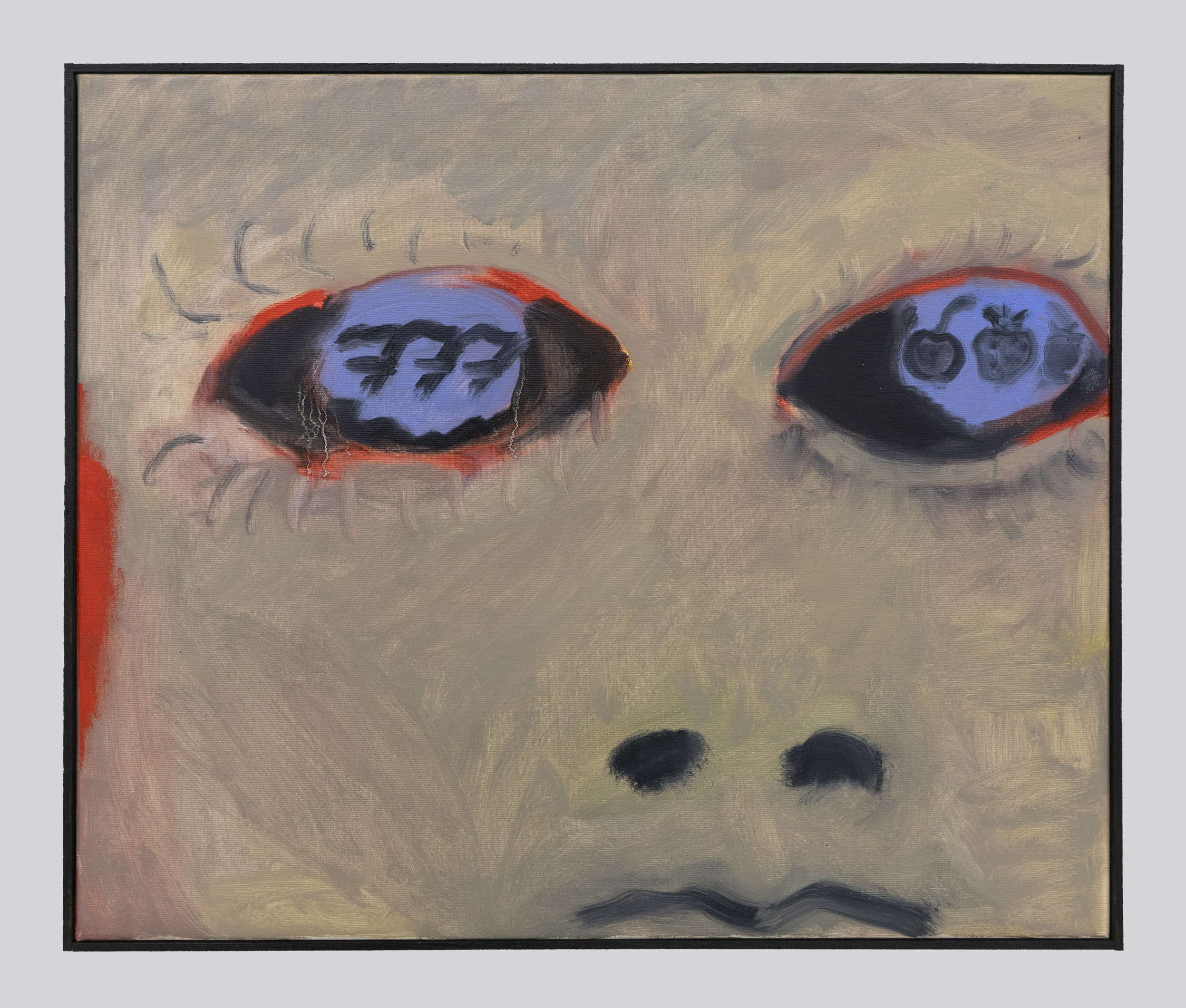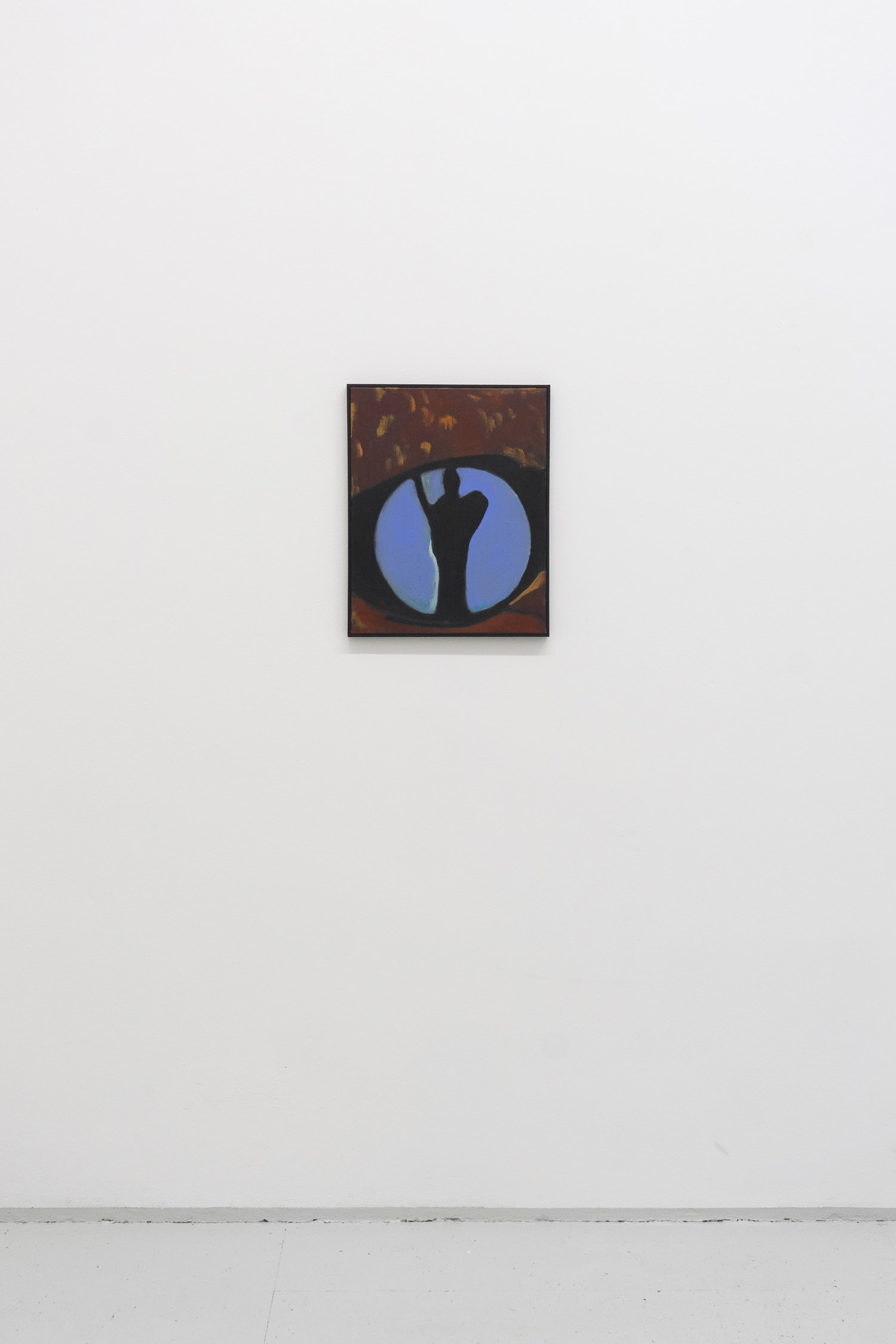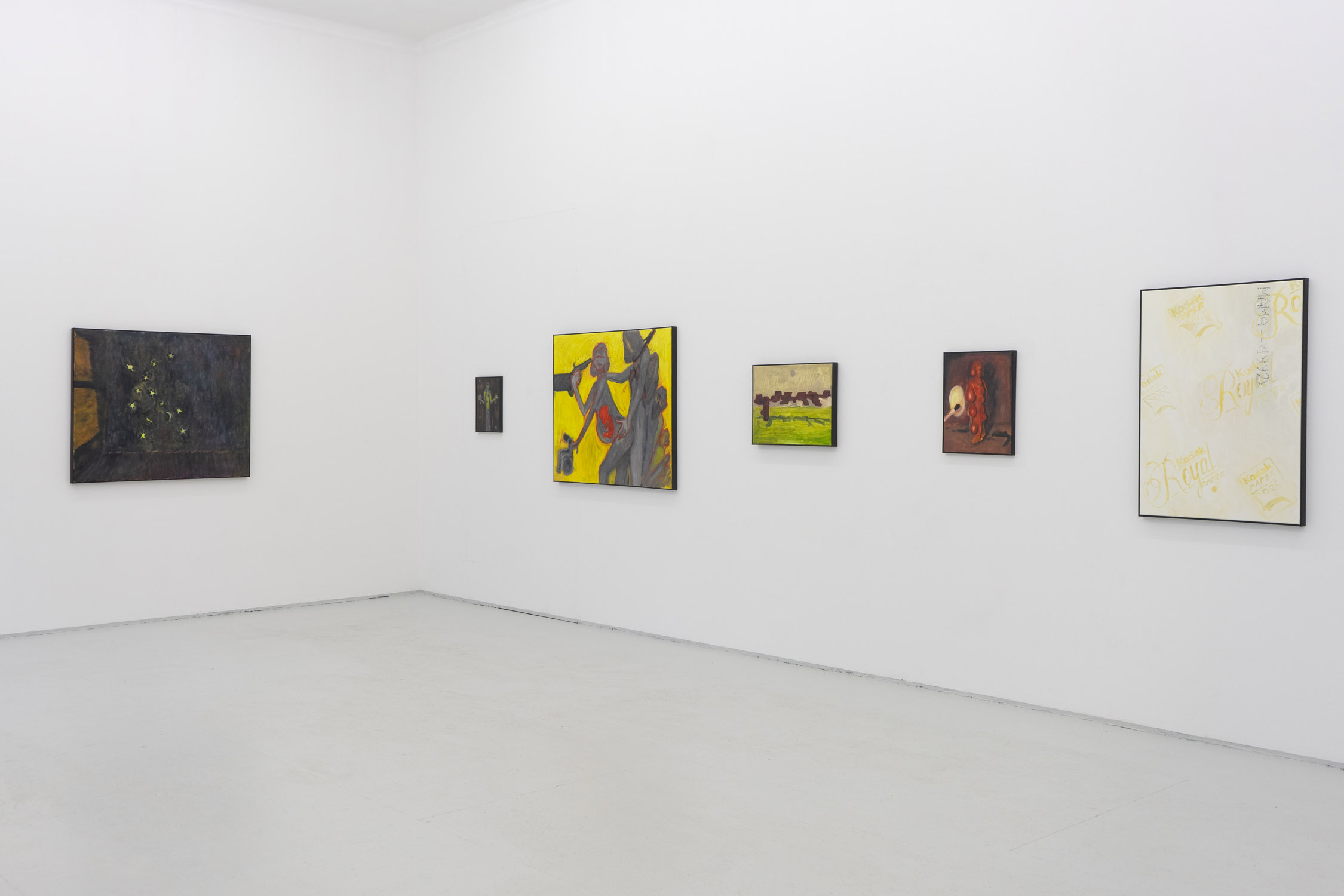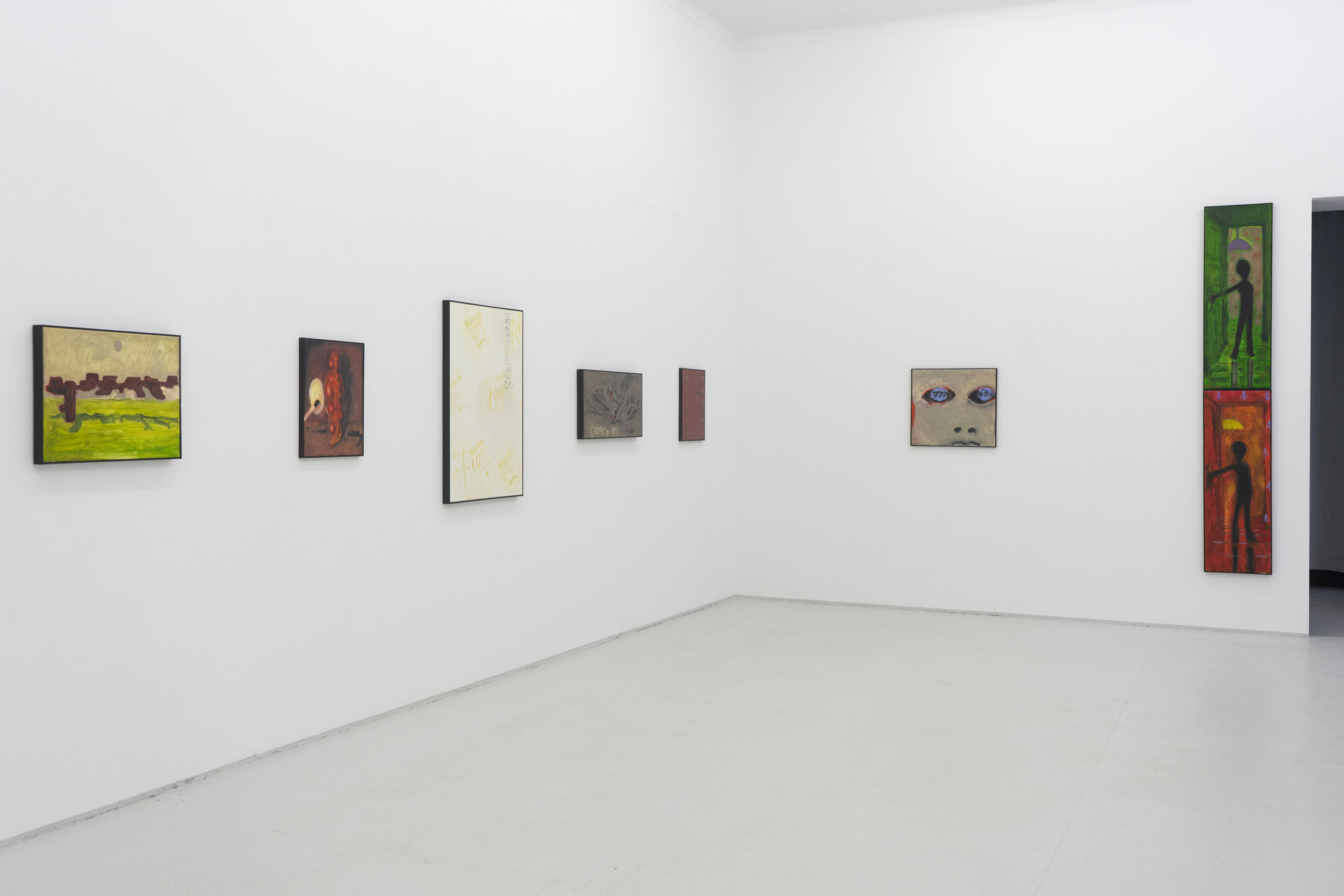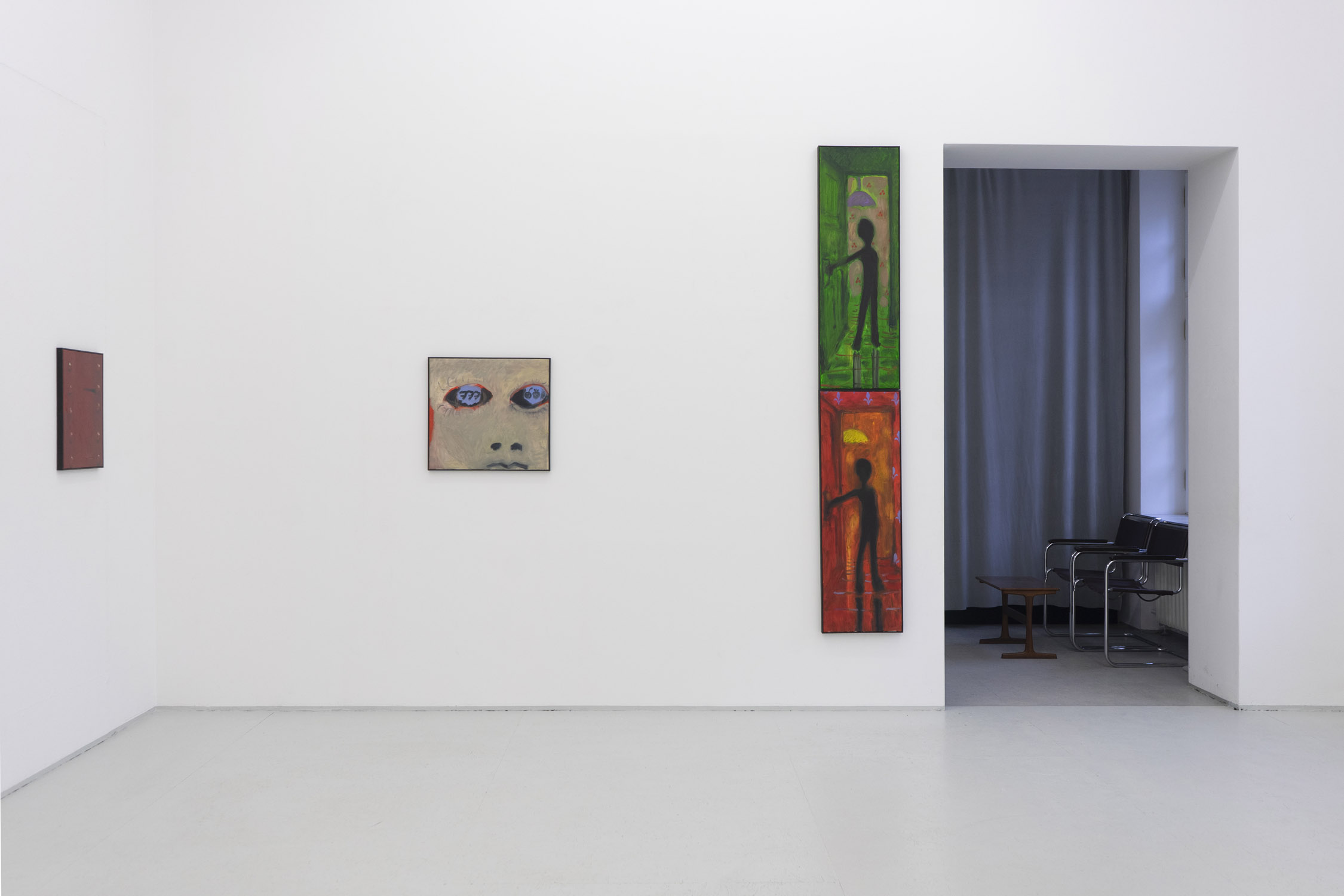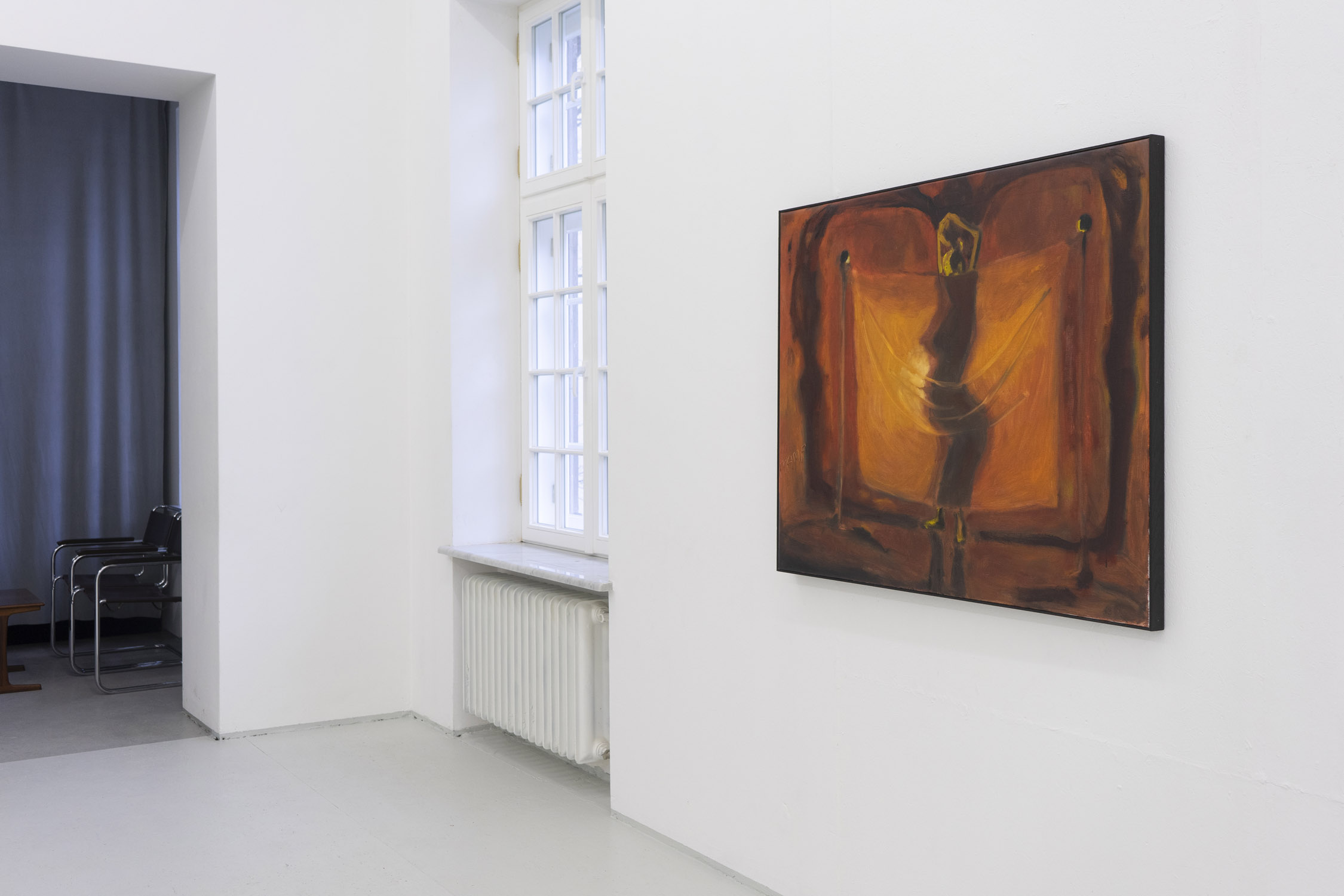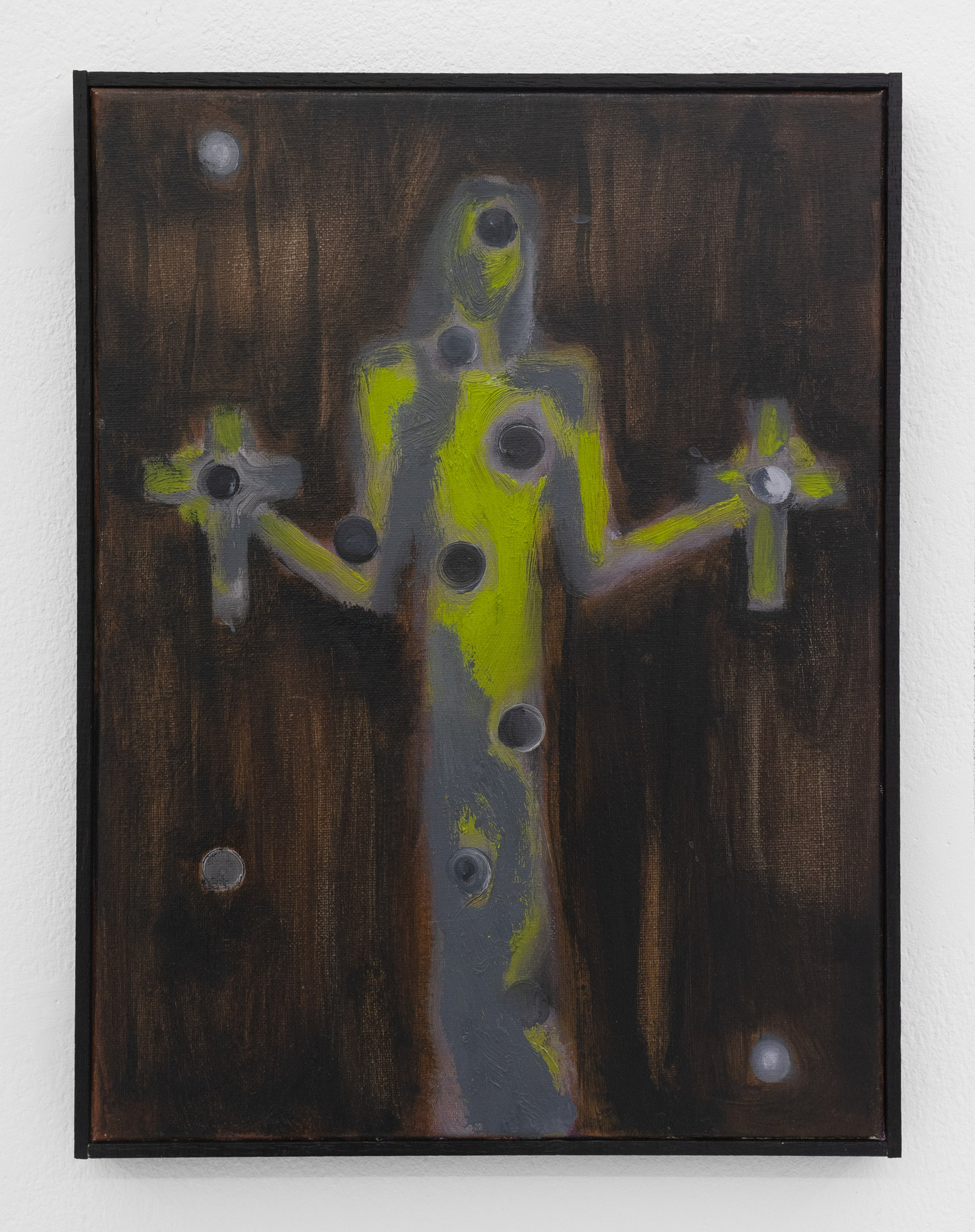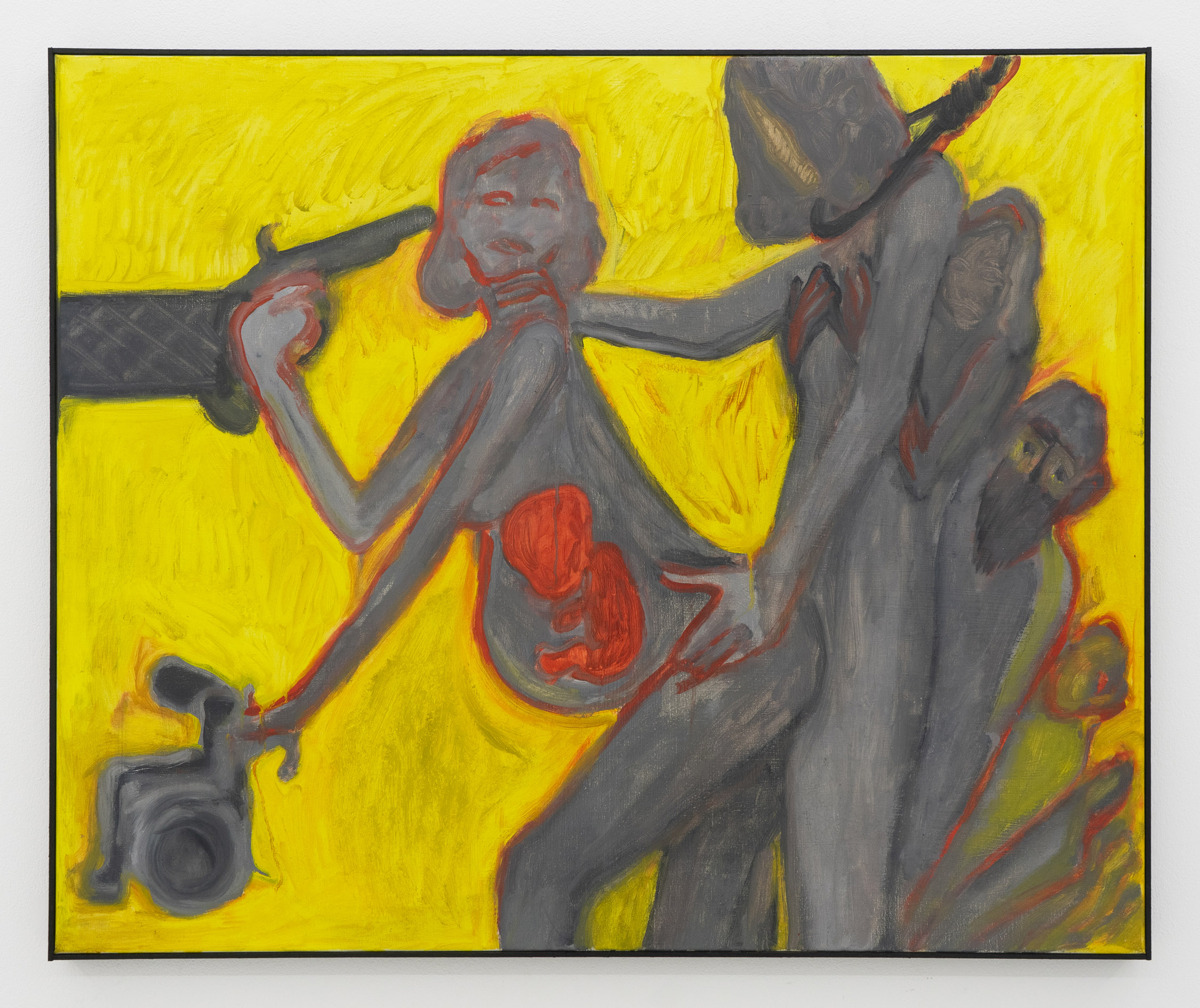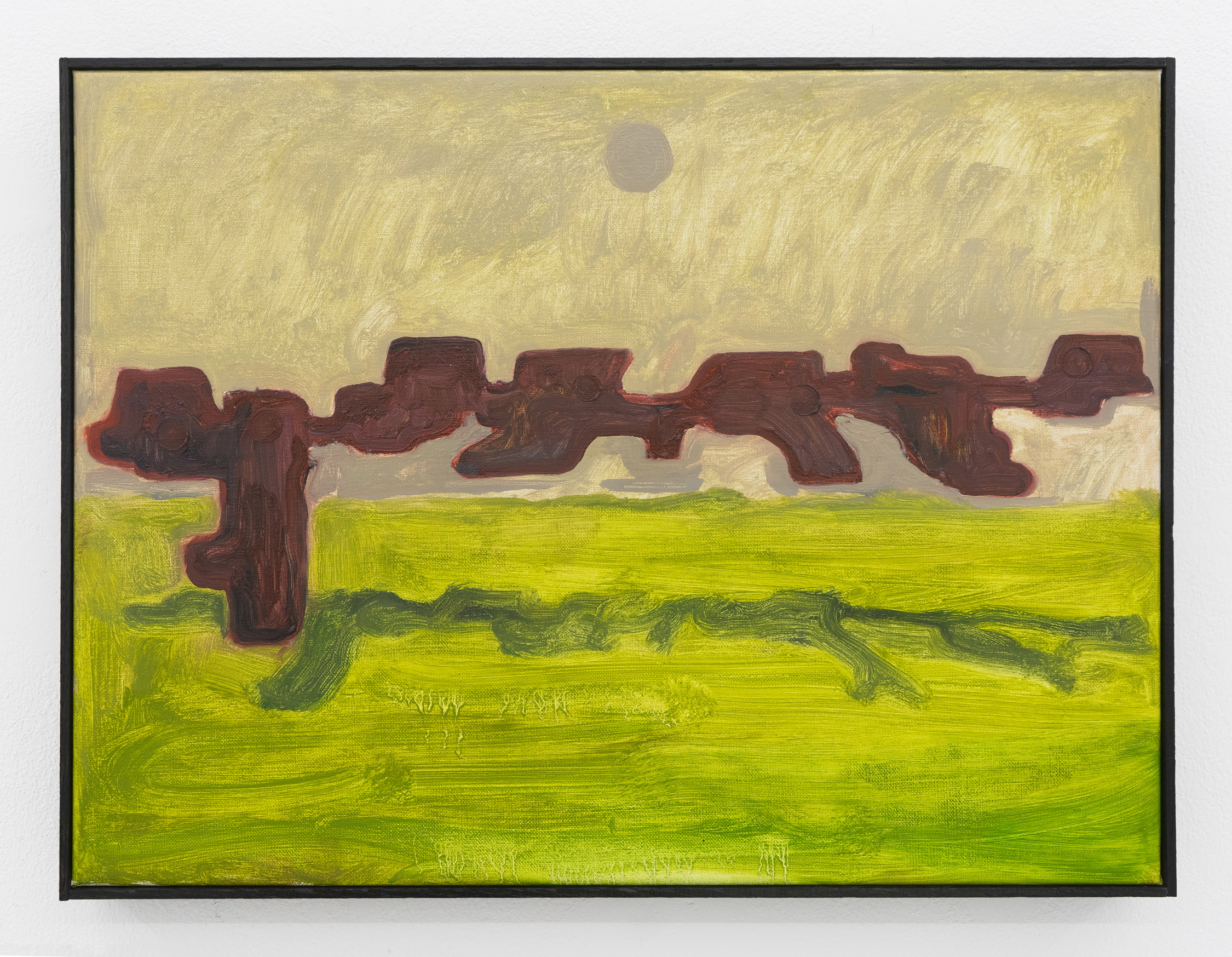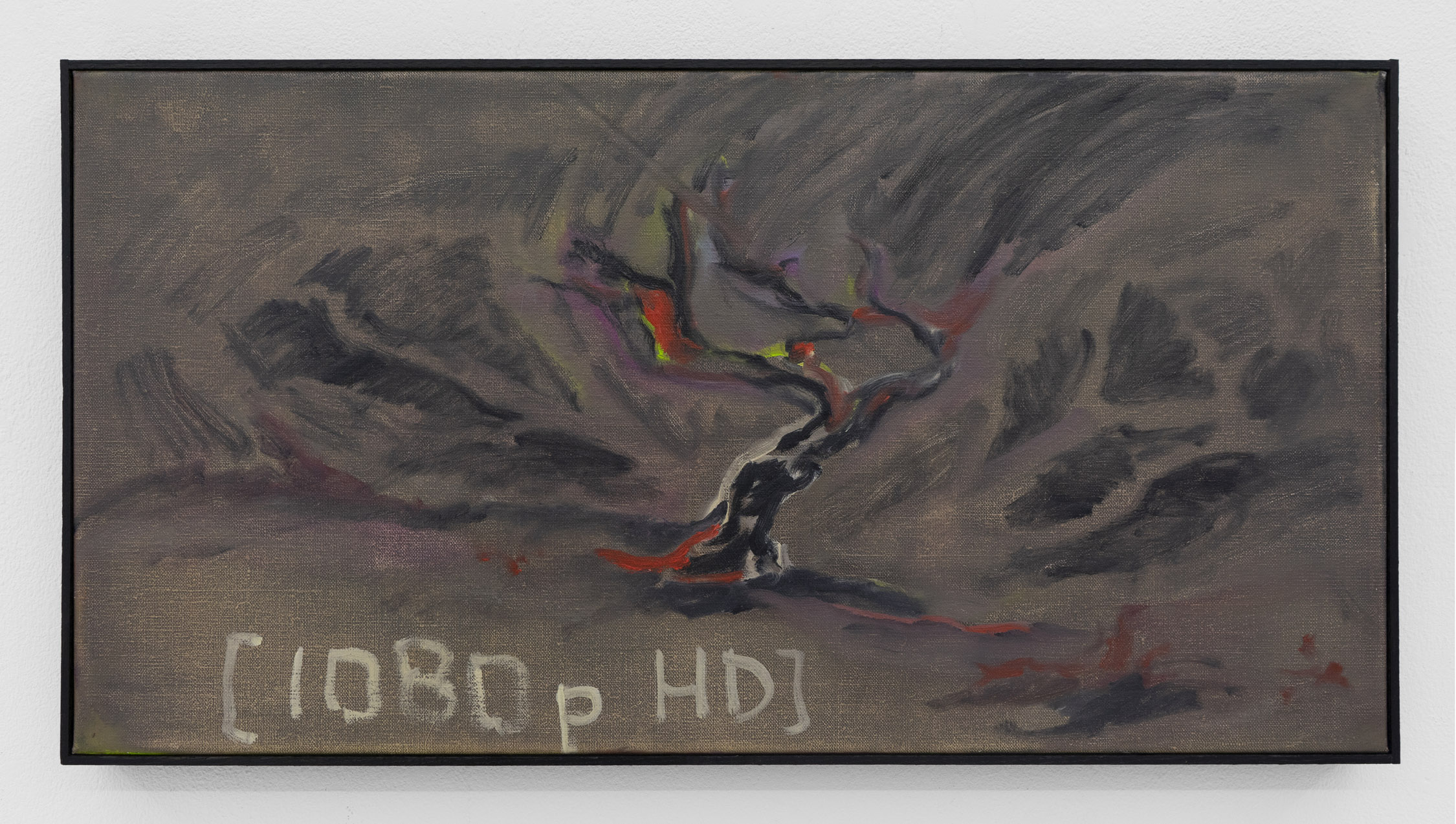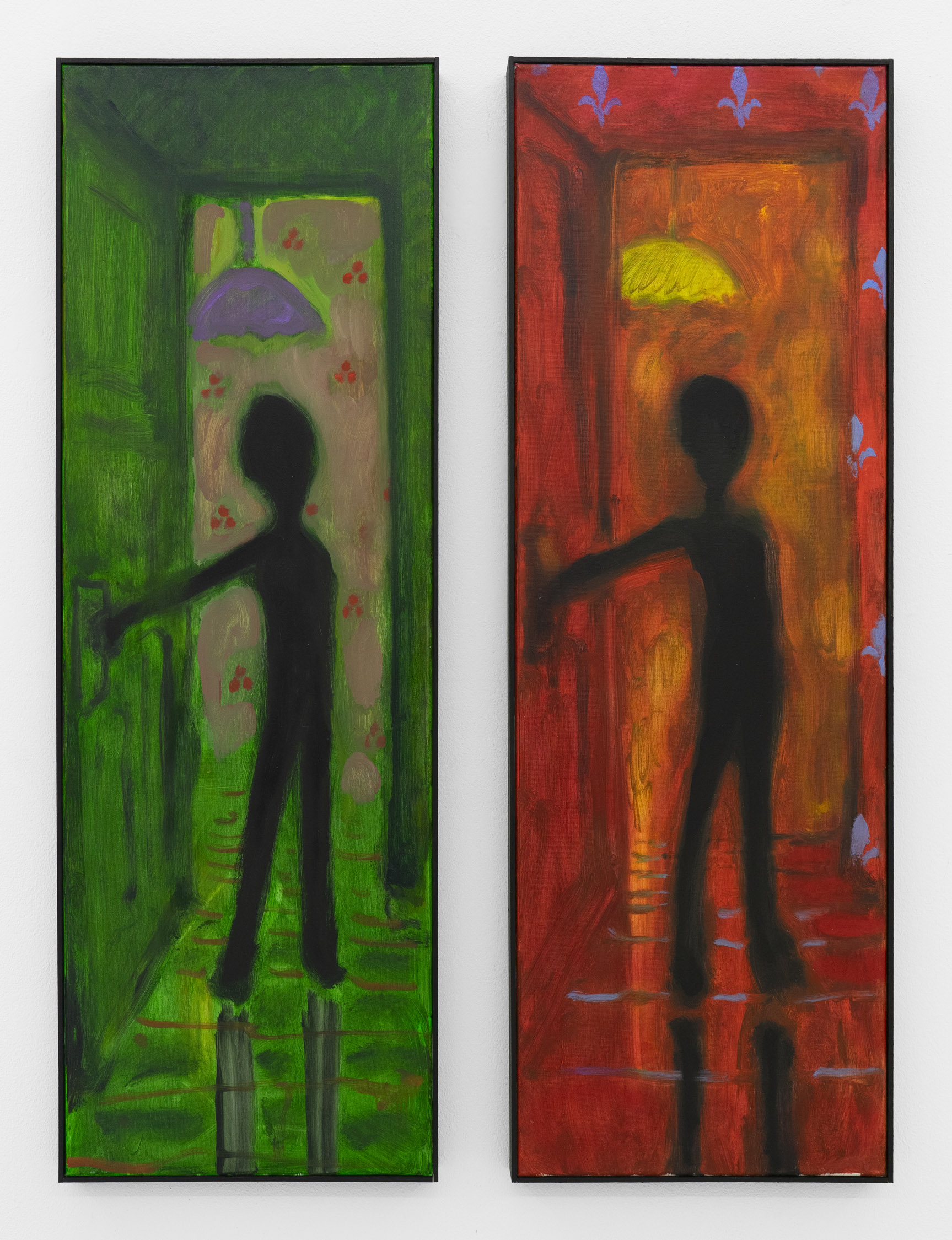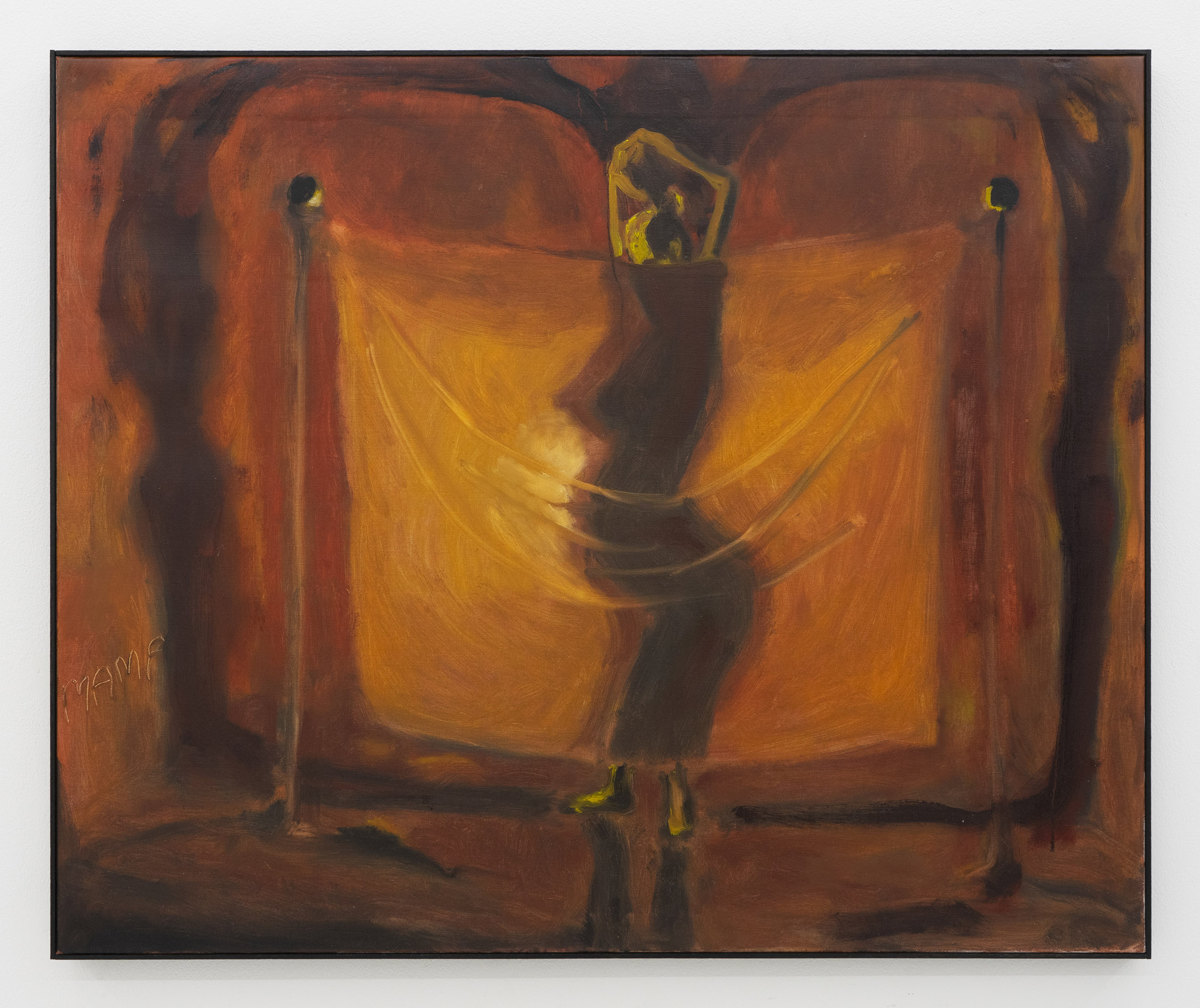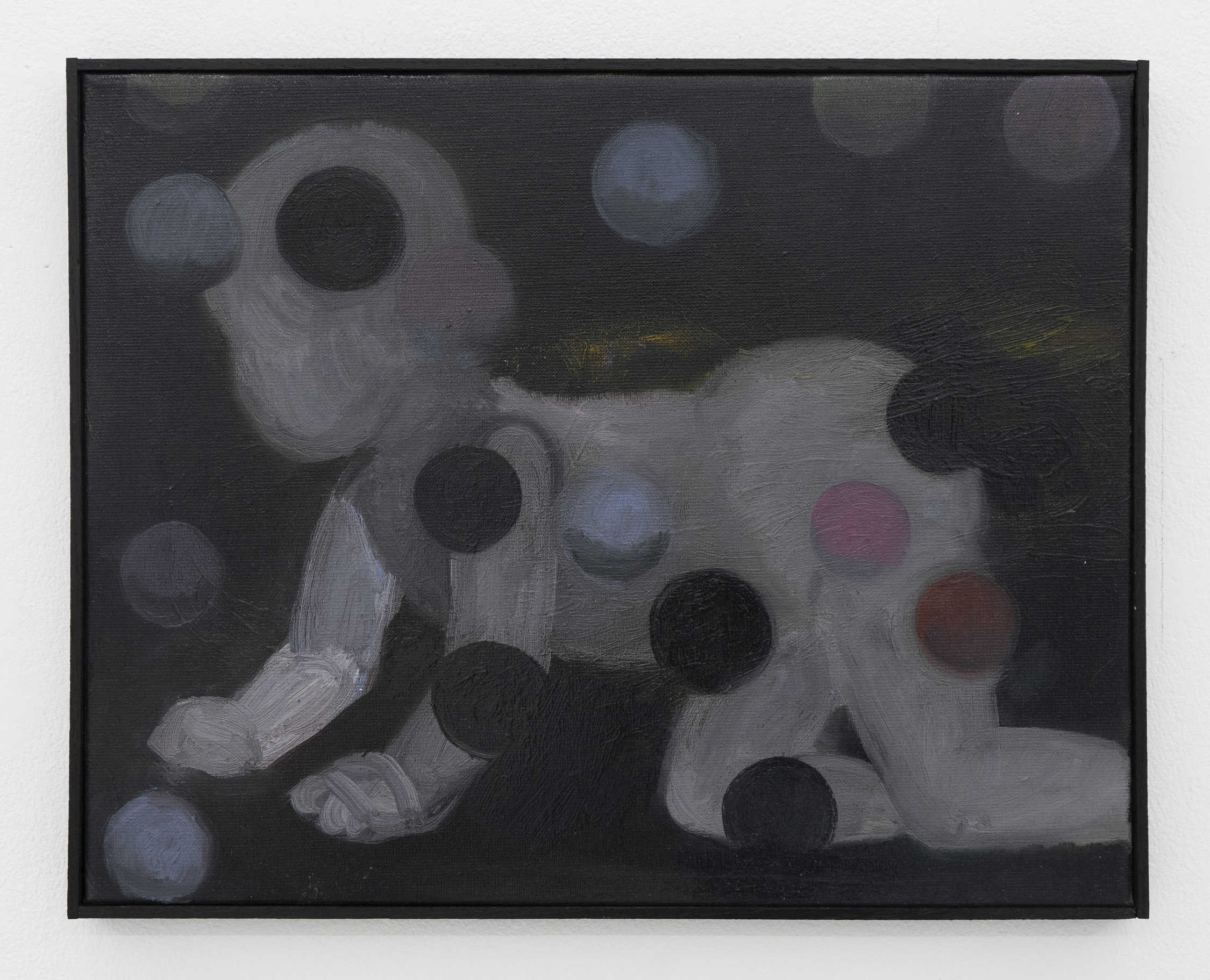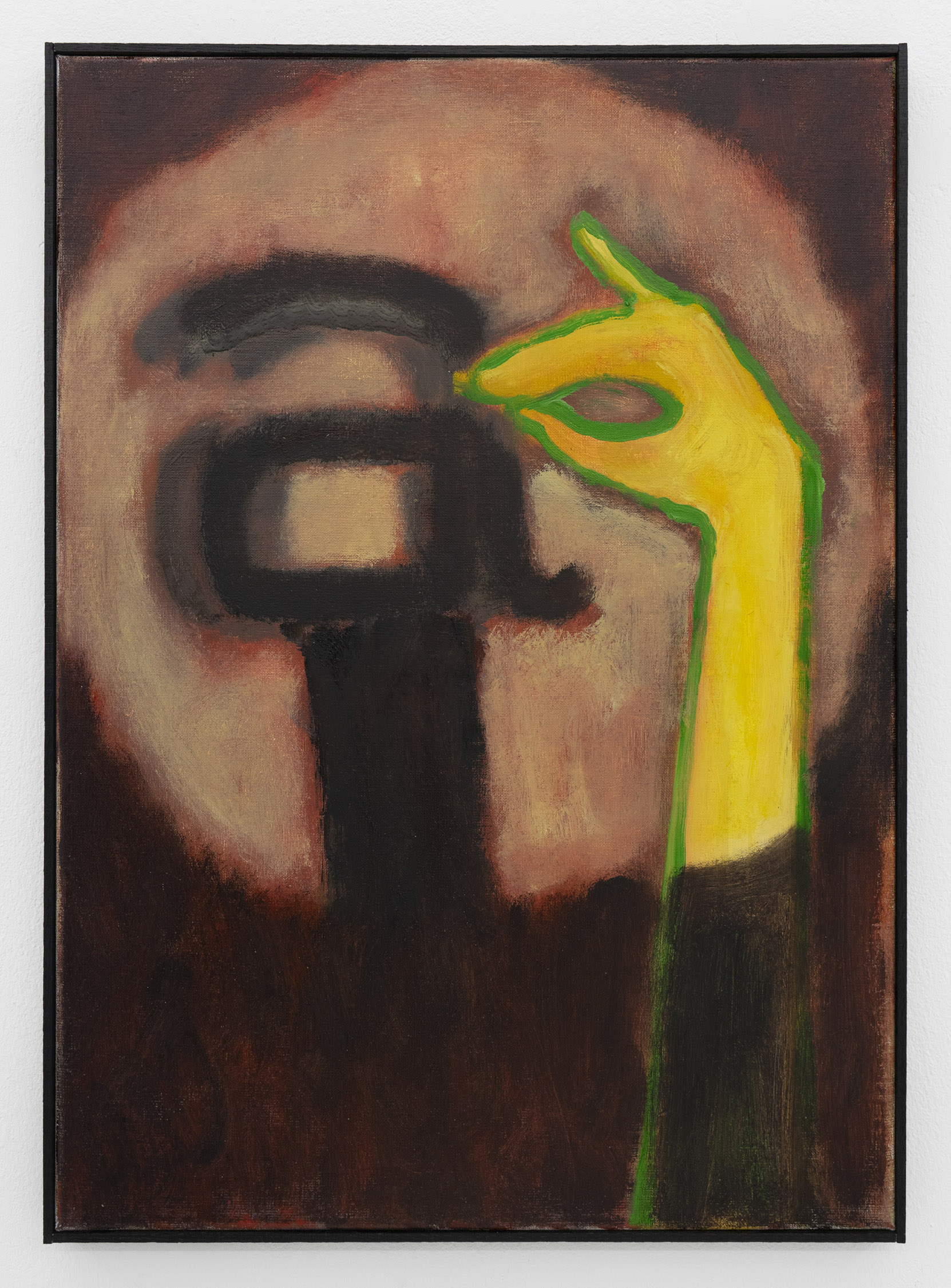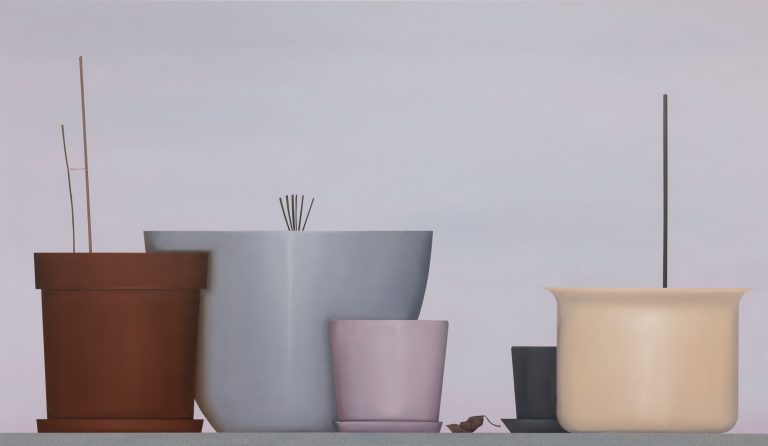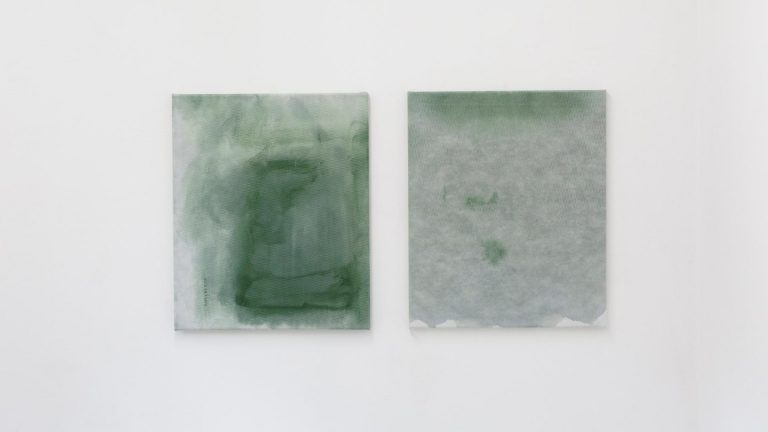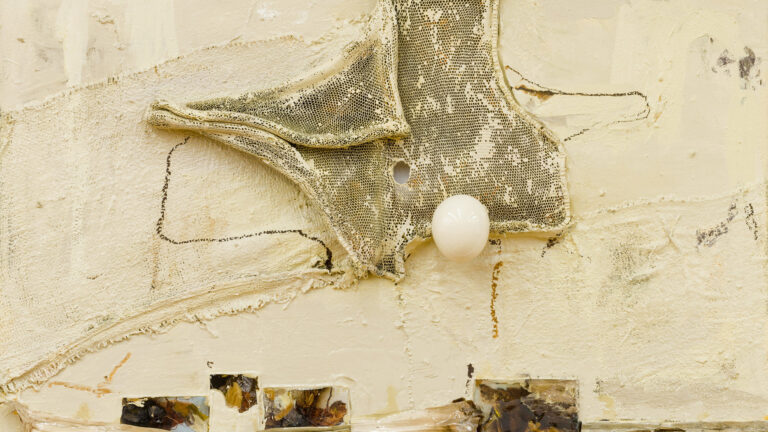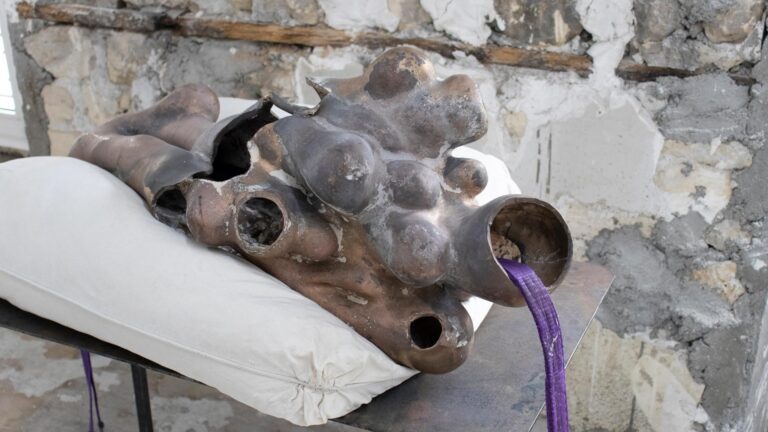Artist: Zuzanna Bartoszek
Exhibition title: Wax Kid
Venue: Stereo, Warsaw, Poland
Date: February 23 – March 29, 2024
Photography: images courtesy of the artist and Stereo
Note: List of works is available here
Rather icons than images. Depictions focusing on an individual gesture, an isolated figure, a theatrical setting. Like a single frame removed from a strip of film or the afterimage of a dream. Icons painted in a way that leave no doubt about their visibility, their urgent demand to be regarded. This is how these works occupy your gaze: through stark contrasts or a muddy all- over colouration, a mysterious constellation of things or a seemingly banal scene, confrontational immediacy coupled with a sense of the shrouded. The paintings exercise the power of sensual attraction, which is detached, however, to a large degree, from the accessibility of what they have to say.
Zuzanna Bartoszek wrote several lines of text to accompany each of her paintings. The writing is in the first person, suggesting the voice of the author who would also be the painter; in one instance, a picture is claimed to be a self-portrait. The texts refer to memories and current events, state the sources of specific visual propositions. They stipulate childhood and religiosity as the thematic realm of most of the works, connecting early age to violence, self-doubt, devotion and the miraculous, while religiosity itself is linked to a desire to identify with the exemplary sufferer. One of the paintings, however, should be taken as a clue to positioning the textual explanation correctly. This painting shows a massive structure floating above the land and casting a shadow on the ground – following Bartoszek’s commentary, it can be read as an overpainted inscription: “Sometimes graffiti on buildings is painted in this way; you can see the shapes of the lettering beneath the paint.” The visual evidence of the painting arises from the dissimulation of communication appealing to common sense. More broadly, it has to be concluded that in the case of Bartoszek’s work painting is essentially overpainting – an intentional distortion of meaning that has been presented as undoing the painting’s enigmatic nature. Her work Rivets, then, specifies the pragmatics of overpainting. While this work depicts a segment of an industrial steel structure coloured in oxblood – Bartoszek refers in her respective text to a particular dark red hue of paint – it also exposes a piece of canvas coated in paint of that very hue. Overpainting, in Bartoszek’s works, is a matter of the crude and unrefined application of paint. Her best works succeed in pushing the rawness of the applied paint to a point where it is just on the verge of compromising the iconic quality of the painted objects.
Most works appear as if cut out of a film – they are imbued with the sense of a lack of context. An explanation for the interruption of narrative coherence is the need to make the painting’s contextual meaning inaccessible in order to preserve that meaning as a potential. In that vein, the painting The Prince of Egypt – God Speaks to Moses [1080p HD] appears as a metaphor: The Burning Bush, painted in rapid, amazingly efficient brushstrokes, makes its visual appearance to expose the invisibility of God. In that sense, painterly visibility stands for the invisibility of what the painting is about. The significance of the writing in stone, delivered on the occasion of the Burning Bush, which is reduced in Bartoszek’s painting to the scribbled indication of a technical code, is something that still needs to be thought about.
-Ulrich Loock, 18 February 2024

